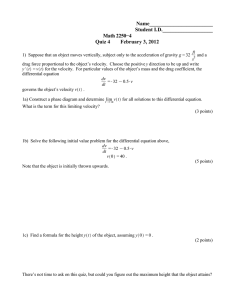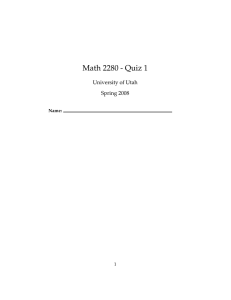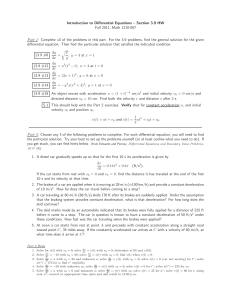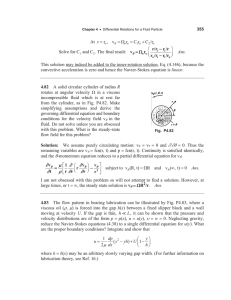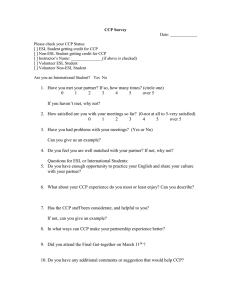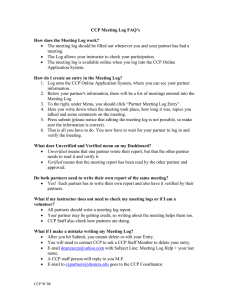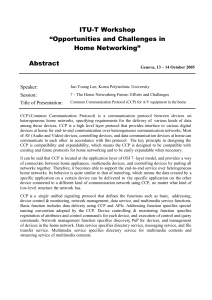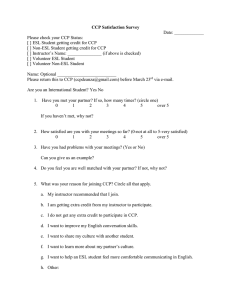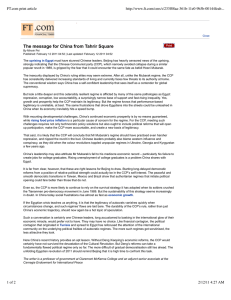Math 2250-10 Quiz 1 SOLUTIONS January 10, 2014
advertisement
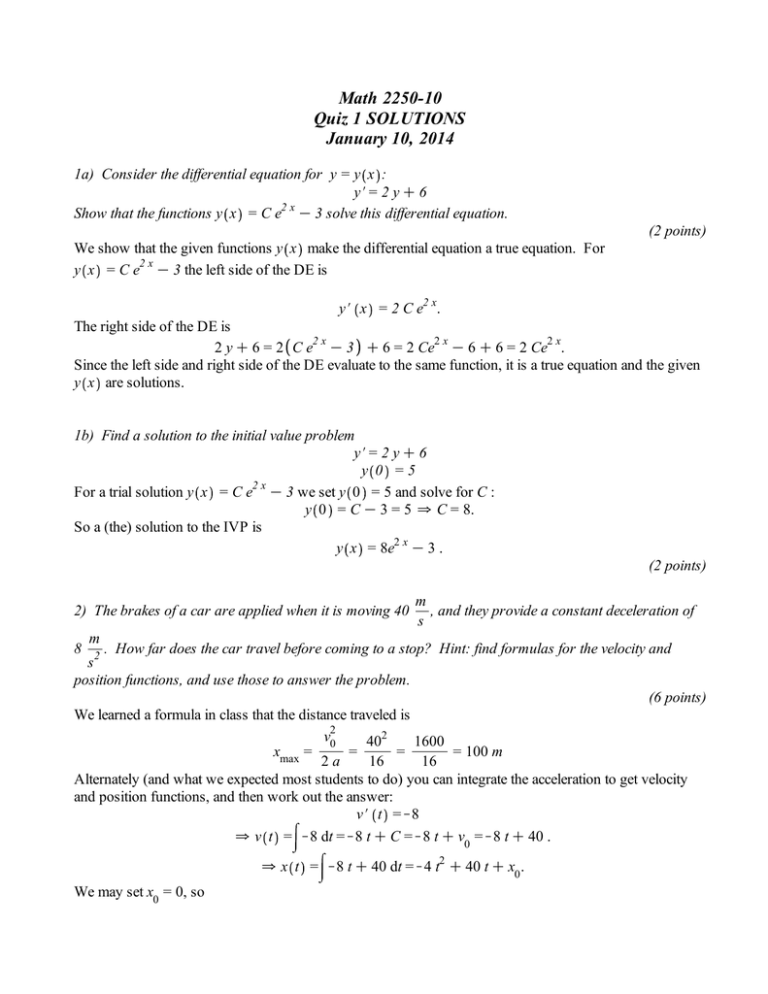
Math 2250-10 Quiz 1 SOLUTIONS January 10, 2014 1a) Consider the differential equation for y = y x : y#= 2 y C 6 2x Show that the functions y x = C e K 3 solve this differential equation. (2 points) We show that the given functions y x make the differential equation a true equation. For y x = C e2 x K 3 the left side of the DE is y# x = 2 C e2 x. The right side of the DE is 2 y C 6 = 2 C e2 x K 3 C 6 = 2 Ce2 x K 6 C 6 = 2 Ce2 x. Since the left side and right side of the DE evaluate to the same function, it is a true equation and the given y x are solutions. 1b) Find a solution to the initial value problem y#= 2 y C 6 y 0 =5 2x For a trial solution y x = C e K 3 we set y 0 = 5 and solve for C : y 0 = C K 3 = 5 0 C = 8. So a (the) solution to the IVP is y x = 8e2 x K 3 . (2 points) 2) The brakes of a car are applied when it is moving 40 8 m , and they provide a constant deceleration of s m . How far does the car travel before coming to a stop? Hint: find formulas for the velocity and s2 position functions, and use those to answer the problem. (6 points) We learned a formula in class that the distance traveled is v20 402 1600 xmax = = = = 100 m 2a 16 16 Alternately (and what we expected most students to do) you can integrate the acceleration to get velocity and position functions, and then work out the answer: v# t =K8 0 v t = K8 dt =K8 t C C =K8 t C v0 =K8 t C 40 . 0 x t = K8 t C 40 dt =K4 t2 C 40 t C x0 . We may set x0 = 0, so x t =K4 t2 C 40 t. The maximum x will occur when v t = 0 =K8 t C 40, i.e. at t = 5 sec. Then the distance traveled is x 5 K x 0 =K4$52 C 40$5 =K100 C 200 = 100 m.



